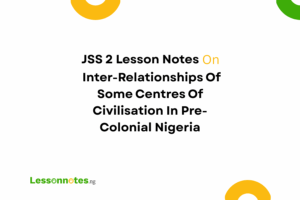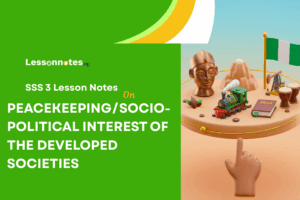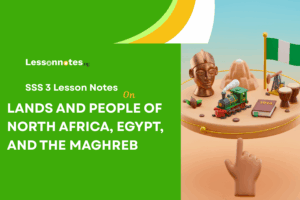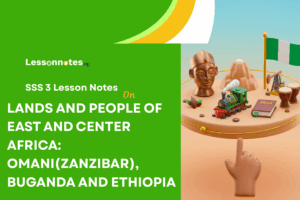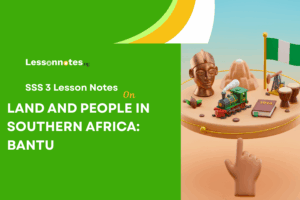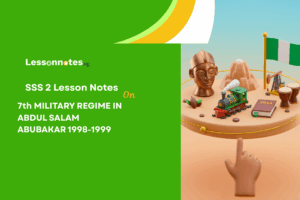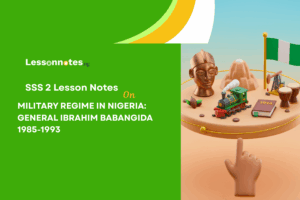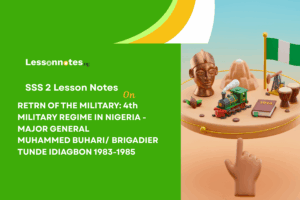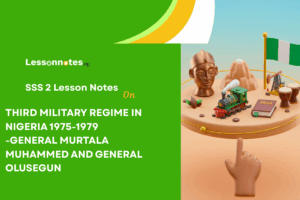Debt Relief And International Aids SS3 Nigerian History Lesson Note
Download Lesson NoteTopic: Debt Relief And International Aids
Many countries around the world, especially poorer ones, face big money problems. They often borrow money from richer countries or international organizations. When these poor countries cannot pay back their loans, they may receive help in two main ways: debt relief and international aid. This lesson will explain what these terms mean, how they work, and their effects on countries and people.
What is Debt?
Understanding National Debt
Just like a person might borrow money from a bank, countries also borrow money. When a country borrows money, this is called “national debt.” Countries borrow money for many reasons:
- To build roads, schools, and hospitals
- To pay government workers
- To help during emergencies like natural disasters
- To develop their economies and create jobs
Where Countries Borrow From
Countries can borrow money from different sources:
- Other Countries: Rich countries often lend money to poorer ones
- International Organizations: Such as the World Bank and International Monetary Fund (IMF)
- Private Banks: Banks in wealthy countries lend money to governments
- Bond Markets: Countries sell “promises to pay” (bonds) to investors around the world
Debt Problems
When countries borrow too much money, they can face serious problems:
- Debt Burden: Having to spend a large part of national income just to pay interest on loans
- Debt Trap: Borrowing more money just to pay back old loans
- Economic Slowdown: Less money to spend on important things like education and healthcare
- Poverty Increase: When governments cut spending on social services to pay debts
What is Debt Relief?
Definition
Debt relief is when lenders agree to reduce or cancel the debts that poor countries owe them. This helps these countries recover from their money problems.
Types of Debt Relief
- Debt Cancellation: Completely erasing the debt so countries don’t have to pay it back
- Debt Reduction: Lowering the amount of money that needs to be repaid
- Debt Rescheduling: Giving countries more time to pay back their loans
- Interest Rate Reduction: Lowering the extra money (interest) that borrowers have to pay
Major Debt Relief Initiatives
HIPC Initiative (Heavily Indebted Poor Countries)
- Started in 1996 by the World Bank and IMF
- Helps the world’s poorest countries with their debt problems
- Countries must follow certain economic rules to qualify
- Has helped over 35 countries reduce their debts
MDRI (Multilateral Debt Relief Initiative)
- Started in 2005
- Provides 100% cancellation of some debts
- Builds on the HIPC Initiative
- Focuses on debts owed to the World Bank, IMF, and African Development Bank
Paris Club Agreements
- The Paris Club is a group of major lending countries
- They meet to find solutions for countries that cannot pay their debts
- They have helped many countries reschedule or reduce their debts
- Usually requires countries to make economic changes
What is International Aid?
Definition
International aid is money, goods, or services given by one country to help another country. This help can come from governments, international organizations, or private groups like charities.
Types of International Aid
- Humanitarian Aid: Emergency help during crises like:
- Natural disasters (earthquakes, floods)
- War and conflict
- Disease outbreaks
- Famines
- Development Aid: Long-term help to improve a country’s situation:
- Building infrastructure (roads, schools, hospitals)
- Training teachers, doctors, and other professionals
- Supporting economic growth
- Improving government systems
- Military Aid: Help with security and defense:
- Providing weapons and equipment
- Training soldiers
- Supporting peacekeeping operations
- Technical Assistance: Sending experts to share knowledge:
- Doctors to improve healthcare
- Engineers to build better systems
- Agricultural experts to improve farming
Major Aid Providers
- Bilateral Aid: From one country directly to another
- United States (USAID)
- United Kingdom (DFID)
- Japan (JICA)
- Germany (GIZ)
- China (through various programs)
- Multilateral Aid: From international organizations
- United Nations agencies (UNICEF, WHO, UNDP)
- World Bank
- International Monetary Fund (IMF)
- Regional development banks
- Non-Governmental Organizations (NGOs)
- Oxfam
- Save the Children
- Doctors Without Borders
- CARE International
- Religious organizations
How Debt Relief and Aid Work Together
Debt relief and international aid often work together to help countries improve their situations:
- Complementary Solutions:
- Debt relief frees up money that was going to debt payments
- Aid provides new resources for development
- Conditional Support:
- Both often require countries to make changes
- Countries may need to fight corruption
- Countries may need to improve how they manage money
- Countries may need to focus on reducing poverty
- Sustainable Development Goals (SDGs):
- Both debt relief and aid support the global goals to end poverty
- They help countries invest in education, health, and infrastructure
- They can support economic growth and job creation
Examples of Debt Relief and Aid Success Stories
Uganda
- Received debt relief under HIPC in 2000
- Used saved money to eliminate school fees
- Primary school enrollment doubled
- Received aid to improve healthcare systems
- Reduced poverty rates significantly
Ghana
- Qualified for debt relief in 2004
- Invested in education and rural development
- Received aid for infrastructure projects
- Strengthened democratic institutions
- Became one of Africa’s fastest-growing economies
Mozambique
- Had 90% of its debt cancelled
- Used savings to provide clean water to rural areas
- Received aid to rebuild after civil war
- Improved healthcare access
- Built new schools and trained teachers
Challenges and Criticisms
Challenges of Debt Relief
- Conditionality: Countries must make difficult changes to qualify
- New Debt: Some countries borrow more money after getting debt relief
- Slow Process: It can take many years to qualify for debt relief
- Incomplete Relief: Not all debts are cancelled
Criticisms of International Aid
- Dependency: Countries might become dependent on aid
- Corruption: Aid money might be stolen by corrupt officials
- Ineffective Use: Aid might not reach those who need it most
- Cultural Insensitivity: Aid programs might ignore local customs and needs
- Political Motives: Donor countries might give aid to gain political influence
Recent Developments
COVID-19 Pandemic Response
- Many lending countries suspended debt payments during the pandemic
- Emergency aid was provided for healthcare systems
- New loan programs were created to help economies recover
- Vaccines were donated to poorer countries
Climate Change Initiatives
- “Green” debt relief linked to environmental protection
- Aid programs focusing on renewable energy
- Support for countries affected by climate disasters
- Sustainable development projects
Digital Aid and Technology
- Mobile money systems to deliver aid more efficiently
- Digital tracking of aid spending for better accountability
- Technology transfer to help countries develop
- Remote technical assistance through internet connections
The Impact on People’s Lives
Positive Impacts
- More money for healthcare means better hospitals and clinics
- More schools and teachers for children’s education
- Better water systems for clean drinking water
- More jobs when economies improve
- Better roads and transportation
Remaining Challenges
- Benefits don’t always reach the poorest people
- Some regions may be overlooked
- Progress can be slow and uneven
- Political instability can reverse gains
- New global crises can create setbacks
Evaluation
- What is national debt and why do countries borrow money?
- Explain three types of debt relief.
- What is the difference between humanitarian aid and development aid?
- Give two examples of how debt relief has helped specific countries.
- What are some challenges or problems with international aid?
Classwork
Answer the following questions:
- What is debt relief?
- Name two major debt relief initiatives.
- List three types of international aid.
- How might debt relief and international aid work together to help a country?
- What are two criticisms of international aid?
Assignment
Research one country that has received debt relief or significant international aid. Write a short report (one page) explaining:
- What problems the country faced
- What type of debt relief or aid they received
- How the situation improved (or didn’t improve)
- What challenges remain for the country


